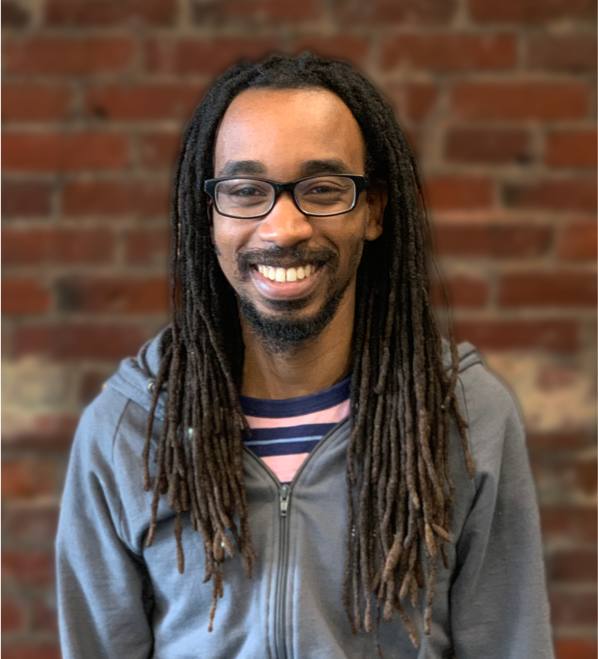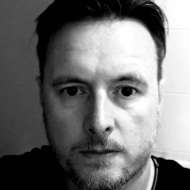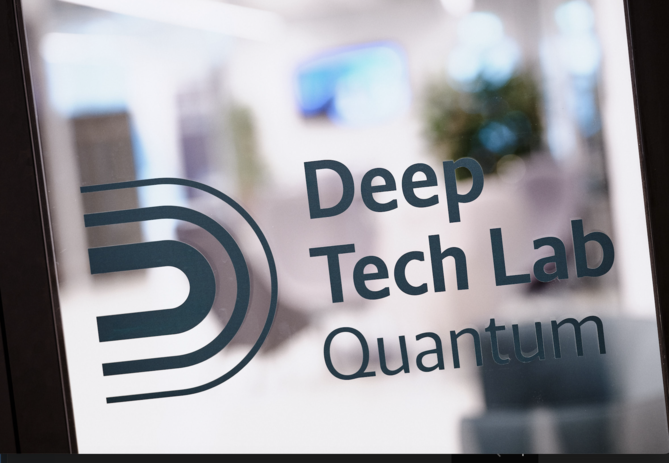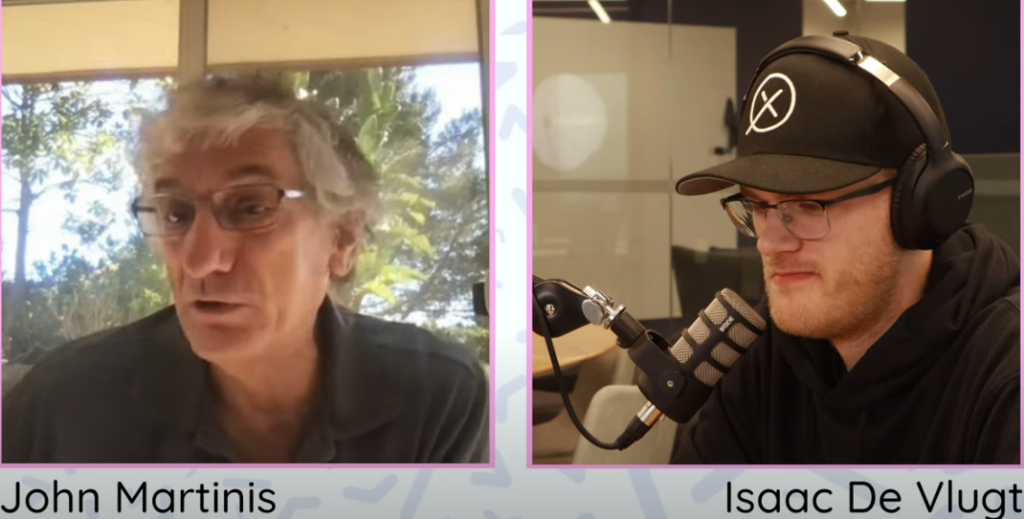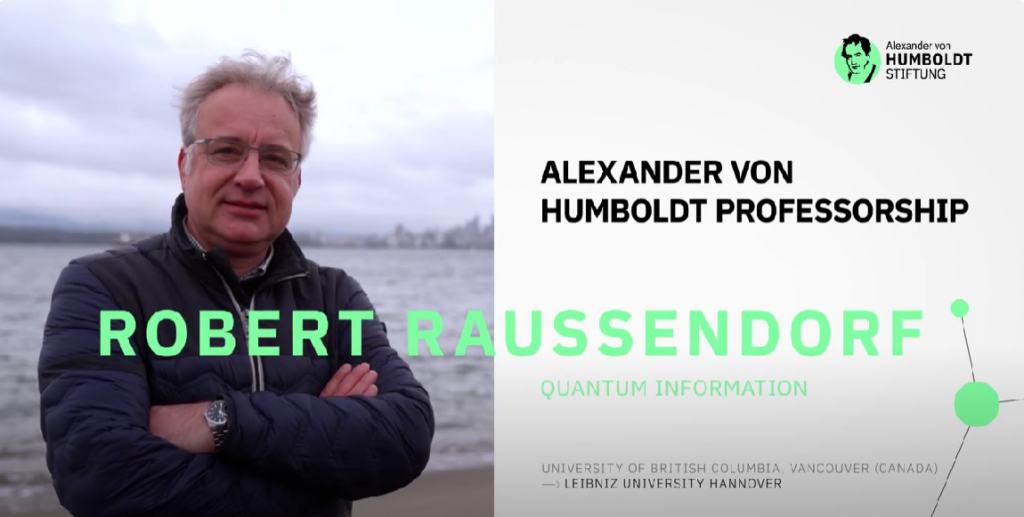Afro-Americans have been sadly underrepresented in the STEM fields for as long as there have been records. QC has been no different. TQD talked to one physicist about his journey so far in the industry and also where he’s heading
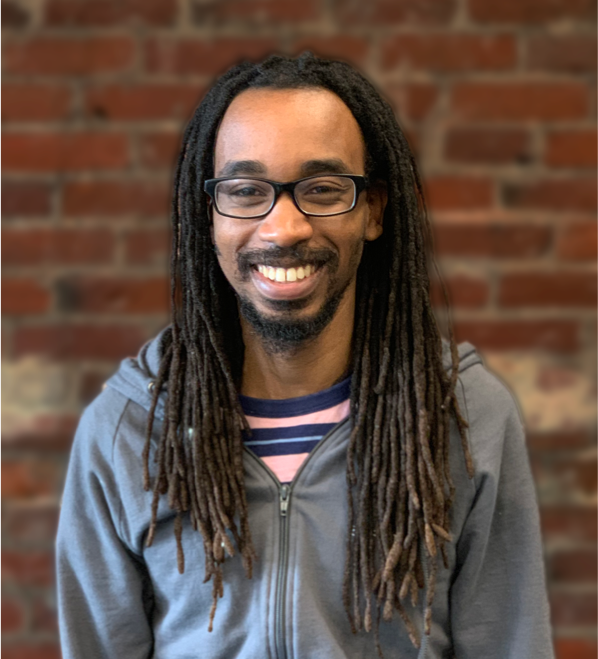
Fragile Mind
The STEM subjects get a bad rap from a lot of students. It’s a battle between the left and the right side brainists. Could it be because they’re harder than studying languages, history or the social sciences? While no scientist myself, my the younger me had a basic grasp of the STEMs while a student. I could never imagine, however, being able to study one of those disciplines at university.
It would have been too much for my fragile mind to handle, unfortunately.
And you can forget about moving into a profession that requires those skills, such as a nuclear physicist, statistician, chemical engineer or doctor.
I’m not smart enough.
This is a white male speaking who lives in the UK, with no challenges to face regarding prejudice or racial stereotype.
But just imagine for a moment, if you can, being black in Latin America in 2020 and trying to make a career for yourself. A Muslim in Myanmar. A Jew in 1930s Germany. A Catholic in 18th century England. Or lest we forget, a black in the United States of America from the times of Jamestown to the present day.
The last one is pretty pertinent.
Research Findings
A 2018 article published by the Pew Research Center ‘Diversity in the STEM workforce varies widely across jobs’ presented data that African-Americans ‘make up 11% of the US workforce overall but represent 9% of STEM workers’.
While the statistics don’t lie (I hope), they signal an underlying trend that everything changes but also remains the same.
From another study published in 2017 by the Educational Researcher, the authors’ main conclusion was:
‘If a rationale for policies to improve faculty diversity is to provide role models for underrepresented students, and if it is presumed that students will gravitate toward such role models, the current diversity imbalance in higher education implies that students from underrepresented groups may be nudged toward lower-paying, non-STEM fields. This would serve to perpetuate an already-existing imbalance in the workforce, both in academia and the broader labor market.’
— Representation and Salary Gaps by Race-Ethnicity and Gender at Selective Public Universities co-authored by Diyi Li & Cory Koedel
Put in context, think about how it was for the African American pioneers George Robert Carruthers, George Washington Carver or Mae C. Jemison, who broke — somehow — the chains of emancipation in the sciences to become true Americans.
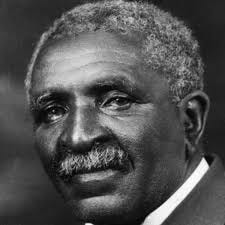
From a Latin American perspective in the United States, Carlos J. Finlay and Helen Rodríguez Trías did their part, too.
According to the modern bible that is Jimmy Wales’ Wikipedia, black or Afro-Americans make up 12.6% of the population. Hispanic and Latino Americans 16.3%. Though the disparity is not great, you can see they represent a ‘large minority’ of the general population.
But where are they?
Never mind in fields where chemistry, biology and computer science are crucial for success, the revolution that is quantum computing (QC) — unlike those well-tread disciplines such as computer science where there is no dearth of talent — has a problem with recruitment.
There’s a lack of coders.
And engineers.
Of basic human resources which can bridge the gap between the business side of the industry and the academic.
And when you bring African-Americans into the equation, the lack of them in those fields is shocking.
So it was a surprise one day navigating LinkedIn I came across Amara Katabarwa, a quantum physicist from Georgia who works at Boston-based Zapata Computing Inc, one of QC’s most innovative startups. Strikingly similar in looks to LA Rams star running back Todd Gurley with his long dreds, Katabarwa certainly catches the eye, more so as he operates in one of the world’s most demanding and technical businesses.
TQD stole some moments with this anomaly to ask him a few questions about himself, his life in science, Zapata Computing and the future path QC is taking.
TQD: Amara, the reason for this interview is for TQD’s audience to get a sense, if possible, who you are as a man and a scientist, to form a portrait of you as an African-American in science, and especially in quantum science. First of all, I’d like to ask you about how, and why, you got started in quantum computing?
Katabarwa: Quantum computing is one of the fields where there is something fundamental and something exciting happening. But quantum computing is a fairly new and niche field. I couldn’t have possibly known about it when I was younger.
But ever since I was young, from the age of maybe six, I knew I wanted to become a scientist. What kind of scientist, I didn’t know at the time. I just knew that there was something about science that seemed more eternal than other subjects taught in school. While some school subjects can be subjective, with science it wasn’t. If I learned how to solve an equation, I will always know how to solve that equation.
It was later in high school that I learned about physics, and quantum physics was something that seemed interesting. And while getting my undergraduate degree and Ph.D., I wanted to get into quantum computing because I wanted to be involved with something that was intellectually challenging and at the frontier.
TQD: Growing up, did you have any role models in science?
Katabarwa: I was surrounded by science growing up. My father is a scientist and my mother is a mathematician. My parents put me in an environment where I was always learning, and I found out I wanted to learn more about science.
TQD: Did you want to become a scientist from an early age or a firefighter or football player like most other boys?
Katabarwa: Ever since I was young, from the age of maybe six, I knew I wanted to become a scientist. What kind of scientist, I didn’t know at the time. I didn’t decide to become a scientist; I just sort of assumed I’d become one at some point.
TQD: Let’s talk about school and university for a second. How was the experience with your teachers and professors, did you have anyone you’d consider a mentor who assisted you on your journey to where you are today?
Katabarwa: In high school, there were some really good teachers. My calculus and pre-calculus teachers come to mind when I think about people who always kept me interested in science and mathematics. There’s a long chain of people who are responsible for who I am today, but I don’t think of them with the traditional label of “mentor.”
TQD: You studied for a Ph.D. in Quantum Computing and Quantum Information theory at the University of Georgia, how was that experience? Did you learn a lot?
Katabarwa: I found out that the only way to truly become a scientist was to do a Ph.D. Doing a Ph.D. was the only way I could satisfy my desire for doing science research, which I wanted to do from when I was young. For a while, I was the only student in the department interested in quantum computing. What was challenging about this, and this is probably true for any emerging field, is that there was no one to bounce ideas off of one another about quantum computing. When I was stuck on a concept, I just had to wait and figure it out myself. I did learn a lot. My time getting my Ph.D. showed me the importance of being independent, self-motivated and patient.
‘Quantum computing is one of the fields where there is something fundamental and something exciting happening.’
It was while I was working on my Ph.D., I came across a particular problem about quantum computing that fascinated me, and how I studied the problem that eventually led me to my internship and later full-time job at Zapata.
TQD: From there, you moved on to Zapata Computing as an intern. What was that like?
Working at Zapata was the first time that I’ve had a group of people around me I can talk to daily about quantum computing. When I was getting my Ph.D., for a while I was the only student in the department interested in quantum computing.

But it was also while I was working on my Ph.D., coming across a particular problem about quantum that fascinated me, that eventually led me to my internship and later full-time job at Zapata Computing. There had been a problem I had been thinking about for a while: noise modeling. In quantum computing, one of the hardest things about quantum computers is understanding how to model the noise. This is a hard problem. You have to simplify your noise model in order to study how noise affects the computational process. One thing I was interested in was that there was some approximation of the noise that seemed to do very well. It was interesting to try to explain why the approximation worked well and how it exactly differed from the thing it approximated.
I decided to write about the problem in a physics paper on how to understand approximation of the noise model, and I published it in 2016. A year later, one of Zapata Computing’s cofounders found the paper and thought what I wrote was interesting. He had been looking to create an error-correcting code that was tailored to the device and my thoughts on the subject seemed to gel with what Zapata was thinking about. He emailed me and we began talking about the subject and continued to stay in touch. When Zapata decided to launch, I was one of the first people they contacted to see if I’d be interested in working there.
TQD: Now you work for them fulltime as a quantum physicist — what are you actually doing?
Katabarwa: It’s kind of a dream job for me. It has a mix of things of what I like to do and what I want in a job. Most importantly, I knew I wanted to do research. You can do research in academia, at a national lab, or at a company like Zapata. I decided to join a startup and join Zapata.
I’ve now been working at Zapata for one and a half years. I divide my time into two areas. One is to figure out what features should exist on Zapata’s Orquestra software platform in order to facilitate other people to use quantum devices easily. The other half is doing research of algorithms for near-term devices and how to best understand what a device can do.
TQD: Do you think African-Americans like yourself are well represented in the STEM fields? If not, what needs to change, if anything?
Katabarwa: Women and people of color are unfortunately largely underrepresented in STEM fields. It is something that needs to change.
I can speak to my personal experience of what factors helped me find my way in STEM. Athens, Georgia is a college town, and it’s not known to be a tech hub like San Francisco or Boston, where Zapata is based. But, I was lucky enough to find my way into a dream job and doing something I’ve known I wanted to do from a young age. I believe you are who you are by your own efforts, and partly sometimes luck and partly the people you meet and learn from. Speaking from my own personal experience, I can say it was a combination of factors. It was growing up in a supportive environment with my parents who nurtured my interest in science, and it was having teachers who ignited and kept my interest in science and mathematics. So I’d say that parents and educators play a huge role in igniting, fostering and nurturing the interest of young people in STEM.
‘Women and people of color are unfortunately largely underrepresented in STEM fields. It is something that needs to change.’
Tackling the representation problem at the Ph.D., in my view of things, is already very late. It is increasingly the case that the STEM fields are becoming immensely technical and inter-disciplinary. The trend is that a certain subset of, relatively speaking, young people are increasingly exposed to higher-level material. Since the pool of talent is increasingly composed of such students, anyone without the background would mostly feel not up to the task. It is my view that without the right background there is very little STEM companies or even universities can do. It’s very hard to find suitable substitutes for a good nurturing home environment and good grade school teachers.
TQD: Over the last few years, QC has seen exponential growth, with both governments and VCs taking an active interest in the space. What is your view on all this as a working professional within the industry?
Katabarwa: One of the unique things about quantum computing is that, apart from maybe experimental high-energy physics, this is a field that is conditioned on the possibility of building a new piece of technology. So its impact is driven by what is actually possible on a quantum computer. The fact that people are interested in it and that there’s capital pouring in the field is very encouraging. Everyone is working under the assumption that an effective quantum computer can be built — one that consistently outperforms computers of today. Everyone’s efforts — whether you’re doing experiments or whether you’re doing theory — mean nothing if no one is working to build it. The very fact that many people are taking interest in the field is very encouraging; it increases the chances of useful quantum computers being built. Once they are built, what’s exciting is that we will have a fundamentally new computational model that is very different from the models of the past 50 years. Quantum computing is a new way of thinking about computing itself. Having a new computational model in computer science is very intriguing. We don’t just have a new way of representing a concept of a bit; we have a new fundamental unit of computation, namely the quantum bit.
TQD: And what is Zapata Computing’s part to play in all this?
Katabarwa: Zapata is mobilizing the community in quantum computing in trying to use and understand what’s capable on near-term devices. It’s not known exactly how to do that, what the devices are capable of and how they would be used to the best of what they are capable of. Zapata is a leader in this space. If I give you 200 or 500 qubits, what could you do with them, and where can you find actual impact? This is what Zapata is tackling.
TQD: What will the state of QC be like in a decade? Can you predict anything particularly interesting?
Katabarwa: Given how fast quantum computing is growing, it’s hard to predict what will happen even in the next five years. I wouldn’t dare to predict what the state of QC will be in a decade.
But what I hope to see happen in quantum computing in the near future: I hope to see quantum advantage in the next few years. This means quantum computers consistently outperforming classical computers. When I started my Ph.D., only world-class experimentalists could imagine manipulating qubits. And they could manipulate maybe six qubits. Five, six years later, there are devices anyone can use. What I hope to see happen soon is a commercially viable application for quantum computers.
TQD: Finally, have you got any specific plans for 2020 professionally? Will you be attending any QC conferences, giving any keynote speeches we should be aware of or maybe writing the next great scientific book on QC?
Katabarwa: For 2020, one thing I want to understand better is what you might call near-term quantum validation of computers or quantum validation of near-term devices.
TQD: Thank you for your time, Amara.


